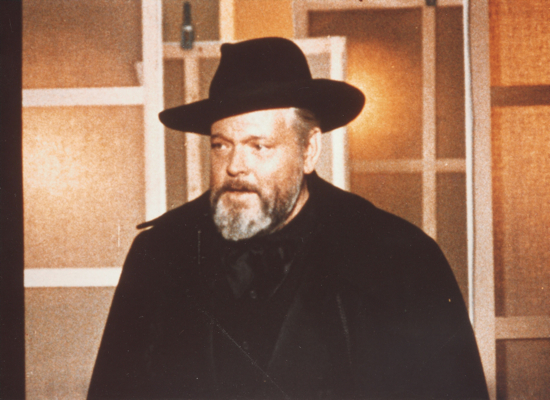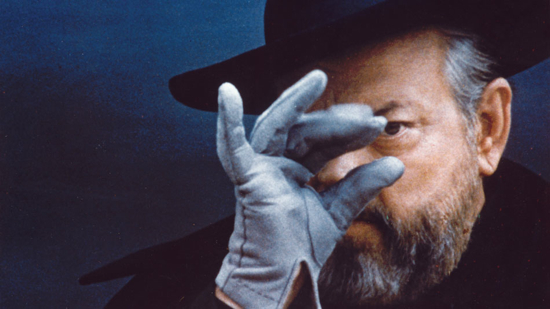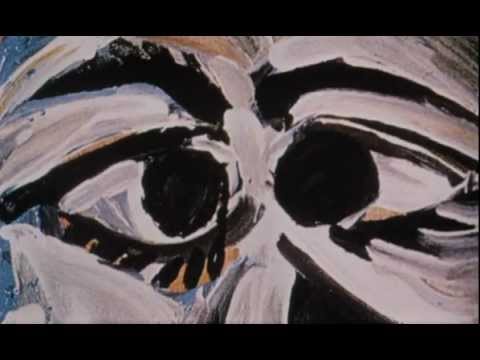The re-release of Orson Welles’ F for Fake this summer is a cause for celebration. Considered to be Welles’ most personal film, it showcases his personality and creativity in a wholly unique way. Welles asks his audience to trust him as he makes F for Fake in front of them, and he uses the experience to construct a version of himself as a man and as an auteur in the process. On many levels it’s a rare treat, especially in this beautiful high-definition restoration by Criterion.
So much has been written over the years about F for Fake, and the work itself is so complex and invites so many different kinds of analysis, it’s difficult to decide how best to approach it. Perhaps this new transfer invites us to consider how it stands up today, whether it has anything to offer an audience inured to special effects. One that’s also suspicious of hoaxes, has access to the world wide web, and has absorbed nearly 40 years’ worth of developments in filmmaking since the original release date (which varied markedly between Europe and the USA).
Audiences are literate in the language of cinema in a different way now, thanks to more accessible criticism and to technological advances. Each DVD release has room for extras that educate viewers about editing, camerawork and special effects, at the same time as telling them everything they could possibly need to know about the inspiration for, writing and production of a movie. Nevertheless, this restoration offers an opportunity for audiences to re-evaluate their understanding at the deepest level – to consider the nature of documentary and of fiction, and rediscover some of the reasons we need both.
F for Fake is as honest as it is dishonest, thrusting its paradoxes to the fore right away. Welles declares that we will, for an hour at least, be witnessing a true story. The word ‘FAKE!’ fills the screen over and over again. It’s charmingly obvious, to a modern audience, but there’s a subtlety underneath this declaration: in the discussion of art forgery, the confirmation that something is ‘FAKE!’ could also be a reassuring victory for truth. It could also be a statement of intent to question the nature of cinema and authorship, storytelling and illusion… at the very least, an honest and provocative declaration of the subject of the piece.
F for Fake is a collage. Welles takes great swathes of footage from François Reichenbach’s documentary about the biographer Clifford Irving and his subject, celebrated art forger Elmyr de Hory. Irving was himself a hoaxer: we’re shown how his biography of Howard Hughes was exposed as a fake. Irving and de Hory are co-dependent in each other’s stories, different sides of the same coin. Fakers discuss forgery. Secret lives exist alongside public lives, just as the ‘real’ Spanish Ibiza is also the ‘island in the sun’ whence these stories originate.
F for Fake is a glimpse back to a golden age of hoaxing, of a classical style of sleight of hand and illusion. It’s post-mass communication, but pre-internet, pre-CGI. In one sense, it all comes down to style. Welles’ presence is all about panache and de Hory’s tale is one of artistic style – as he points out, forgery used to be a respectable artistic method. ‘Pretender’ indicated someone who might take the throne one day. And anyway, if museums accept his pieces as ‘authentic’, who is de Hory to argue? Then there’s the craft. Special effects were physical, created with models and paintings. Editing was the actual slicing and splicing of film. Like an art forger, Welles must create his own illusions with his hands.
Appropriating Reichenbach’s documentary to make such a personal picture allows Welles to suggest an investigation into the idea of the auteur – it’s declaredly Welles’ piece, and it’s a very personal composition, but he didn’t shoot or direct most of it. He emphasises the degree to which editing is a vital facet of auteurship. For example, he splices together footage shot on different days on different continents to give the illusion that two people were at the same party. Is this deliberate deception or an artistic statement? It’s up to the viewer to decide whether a pleasing narrative structure takes precedence over the veracity of the story. In this case, one might argue that a documentary has a duty to reflect the reality of events as best it can. But F for Fake asks why we think that’s possible at all, and reminds us that every documentary has to balance truth with storytelling. Explicitly laying out various levels of interpretation like this has kept it fresh and fascinating, despite the inevitability of a detrimental effect of hindsight on its form.

The film also retains life because it isn’t one-dimensional. It’s great just to watch Welles, master showman, spinning stories at his editing machine and swirling his cloak as he performs conjuring tricks, but these make for a hollow self-portrait on their own. Welles builds layers of meditation and romance in his nested stories, sighing over the timeless wonder of Chartres Cathedral – built by men in a space in which the idea of forgery makes little sense – or over Oja Kodar’s (literally) traffic-stopping beauty.
Another central paradox in the life of F for Fake is the fact that it relies, at least at first, on mystery. In one way, it’s less fun if you know what’s going to happen. If you don’t, you can put yourself safely in the hands of Welles, the magician and master storyteller, as he invites you to join him at his Moviola while he edits the very film you’re watching. But the build-up of information that’s accreted since the first Spanish screenings in 1973 constitutes a new, second life for the film. All the knowledge we have now doesn’t spoil the work so much as endow it with hindsight. The more you know, the more layers there are to your viewing; but the further you can see behind the curtain, the less fun, perhaps, the sleight of hand is.
F for Fake opens in selected cinemas across the UK and Ireland on Friday August 24; a full list of screening venues can be found here.




